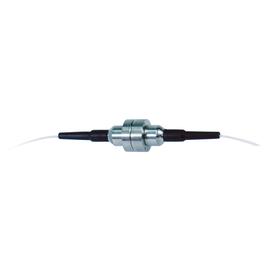Data and power transmission in revolving stages at entertainment venues
A revolving stage, i.e. a permanently installed, circular and rotatable surface in the stage floor, often with additional lifting elements and lowering devices, can be found today in many theatre buildings or even on cruise ships. A revolving stage enables quick scene changes or special dramaturgical effects.
The control and operation of the stage therefore requires reliable communication in real time and high data rates between motors, sensors, cameras, monitors, microphones, loudspeakers or lighting elements and their connected control or transmission systems outside the rotating stage floor.
Real-time systems require transmission rates of up to 100 Mbit or even 1 Gbit per second. Data transmission takes place either by means of conventional slip ring or contactless rotary joints. To optimise data transfer, SPINNER offers innovative solutions for both technologies that are specially adapted to the requirements for the construction of generators, drive trains, hubs and rotors in revolving stages.
Non-contact transmission is high-performance, reliable, maintenance-free and durable
Since pitch slip ring systems are unable to consistently maintain high data transfer rates without any interruptions, SPINNER has developed electronic, contactless rotary joints which allow maintenance-free data transfer that reliably transmit up to 1 Gbit/s of Ethernet data.
Integrated in pitch slip ring systems or as standalone, these systems transmit (real-time) data protocols based on IEEE 802.3, such as Powerlink, Ethercat, Profinet or Sercos III. They can also transmit protocols such as PROFIBUS 12 Mbit/s and CAN (in repeater mode) as well as RS-422 signals. In addition, the transmission of direct current with several hundred watts of power can also be integrated.
If the data transmission takes place by means of optical fibres, we also offer fiber optic rotary joints optimised for operation in entertainment venues.
During the design process, special attention was paid to reliable and maintenance-free use over a long service life in potentially harsh and humid environments as well as in confined installation spaces. Rotary joints with a free inner diameter of up to 300 mm with space for e.g. tubes for liquids or (pressurized) air are also possible.












